Accounting for intensity variation in image analysis of large-scale multiplexed clinical trial datasets
- PMID: 37697694
- PMCID: PMC10556275
- DOI: 10.1002/cjp2.342
Accounting for intensity variation in image analysis of large-scale multiplexed clinical trial datasets
Abstract
Multiplex immunofluorescence (mIF) imaging can provide comprehensive quantitative and spatial information for multiple immune markers for tumour immunoprofiling. However, application at scale to clinical trial samples sourced from multiple institutions is challenging due to pre-analytical heterogeneity. This study reports an analytical approach to the largest multi-parameter immunoprofiling study of clinical trial samples to date. We analysed 12,592 tissue microarray (TMA) spots from 3,545 colorectal cancers sourced from more than 240 institutions in two clinical trials (QUASAR 2 and SCOT) stained for CD4, CD8, CD20, CD68, FoxP3, pan-cytokeratin, and DAPI by mIF. TMA slides were multi-spectrally imaged and analysed by cell-based and pixel-based marker analysis. We developed an adaptive thresholding method to account for inter- and intra-slide intensity variation in TMA analysis. Applying this method effectively ameliorated inter- and intra-slide intensity variation improving the image analysis results compared with methods using a single global threshold. Correlation of CD8 data derived by our mIF analysis approach with single-plex chromogenic immunohistochemistry CD8 data derived from subsequent sections indicates the validity of our method (Spearman's rank correlation coefficients ρ between 0.63 and 0.66, p ≪ 0.01) as compared with the current gold standard analysis approach. Evaluation of correlation between cell-based and pixel-based analysis results confirms equivalency (ρ > 0.8, p ≪ 0.01, except for CD20 in the epithelial region) of both analytical approaches. These data suggest that our adaptive thresholding approach can enable analysis of mIF-stained clinical trial TMA datasets by digital pathology at scale for precision immunoprofiling.
Keywords: digital pathology; fluorescence microscopy; image analysis.
© 2023 The Authors. The Journal of Pathology: Clinical Research published by The Pathological Society of Great Britain and Ireland and John Wiley & Sons Ltd.
Figures
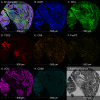
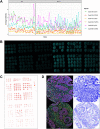

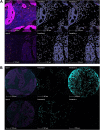
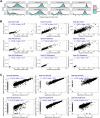
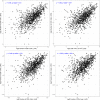
References
-
- Gorris MAJ, Halilovic A, Rabold K, et al. Eight‐color multiplex immunohistochemistry for simultaneous detection of multiple immune checkpoint molecules within the tumor microenvironment. J Immunol 2018; 200: 347–354. - PubMed
Publication types
MeSH terms
Substances
Grants and funding
LinkOut - more resources
Full Text Sources
Medical
Research Materials
Miscellaneous

